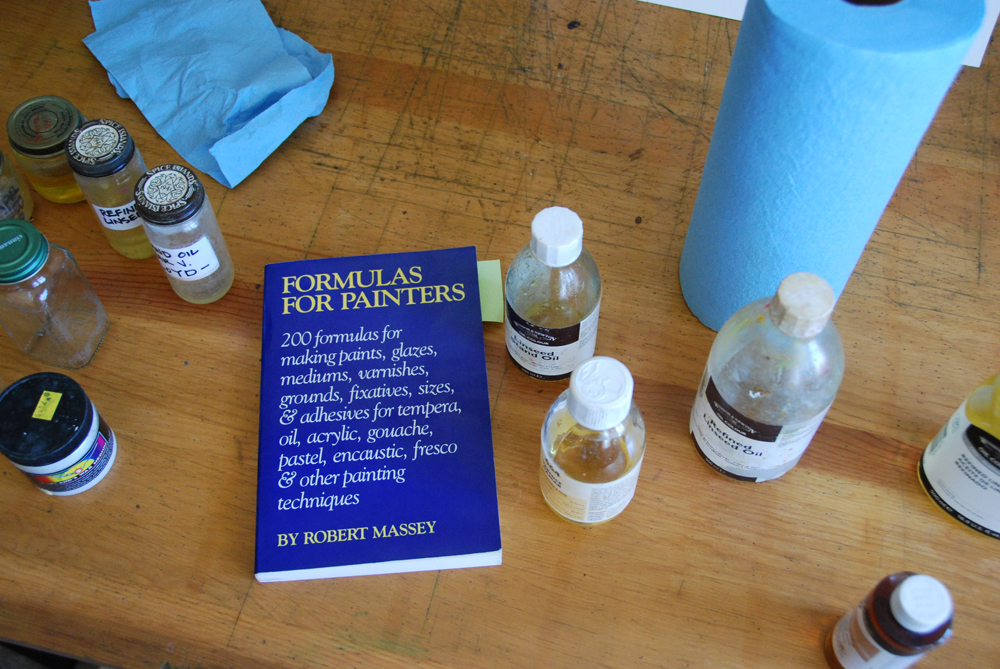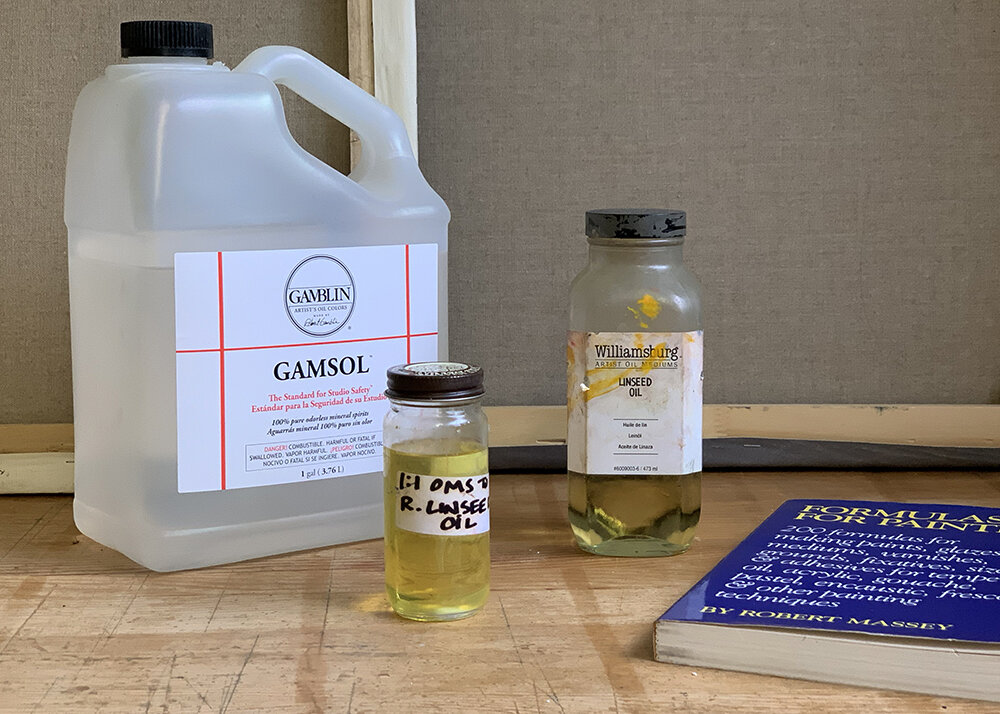Indirect Painting Technique Tip: Mixing Your Own Painting Mediums
If you love the old masters paintings and strive to paint like them.
And if you have any desire to complete a painting over several sessions, with multiple layers of oil paint, it is important that the next layer of paint be more fat than the previous layer of paint was.
Always paint fat over lean.
What this means in modern English is you need to augment your paint layers subtlety with more oil with each subsequent layer of oil paint. The reason to do this is to improve the chemical bond of the oil paint to your painting surface. Otherwise, your painting is at risk of cracking and flaking off from the painting surface, be it canvas, linen, or panel.
Painting fat over lean is easy to accomplish if you plan ahead a bit and have a few of your own painting mediums mixed and ready to use in your studio.
For example, if you are going to complete a painting in three sessions, where are you cover the entire surface with a new layer of paint during each session and meet the fat over lean criteria. Your first layer of paint will be straight from the paint tube, before your second layer of paint you will want to “oil-in” your painting surface with a medium that is leaner than straight linseed oil. I like to use my premixed 1:1 ratio medium of OMS (oderless mineral spirits) (I use gamsol) to refined linseed oil. Gamsol is a solvent and thus thins oil, making the oil leaner. Then for the third and final painting session, I will “oil-in” with refined linseed oil. (* see note below)
If you wish to paint with more layers, start with a leaner paint layer by thinning your paint from the tube with OMS. This will be your leanest layer.
TECHNIQUE TIP: MIXING YOUR OWN PAINTING MEDIUMS
What I find invaluable when mixing my own painting mediums is to use glass spice jars that have metal lids when mixing small batches of medium. I have found that these spice jars are the best because it is always better to mix small batches of medium, as a little goes a long way, and the threading of the metal lids last the longest. Baby-food jars do not work well over the long haul because the lids do not have quality threads and deteriorate quickly and either won’t open or begin to leak.
I get all my medium recipes from my must have copy of “Formulas for Painters”. (See my full book review to learn more about this book.)
This photo shows how I mark off one inch measurements on my re-purposed spice jar. I use a sharpie marker to make permanent tick marks.
The last step, filling the jars with medium following the desired formulation and labeling them.
*Note: To “oil-in” your paint layer needs to be dry to the touch. Apply the medium with a makeup application sponge, patting lightly, then soak up any excess oil with the lint-free rag. (remember to dispose oil rags in a fireproof trashcan, as oily rags cans spontaneously combust!)



